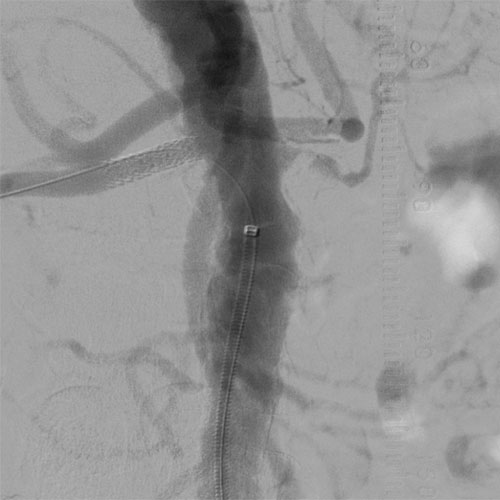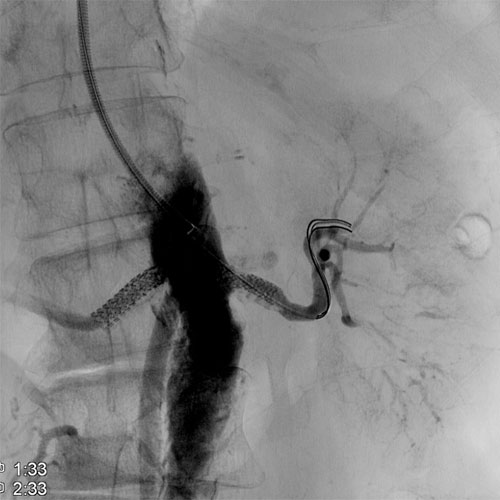The Kidneys filter the body wastes and control the blood pressure.
Normal blood flow through the renal artery (artery of the kidney) is the most important factor of kidney function
The arteries are normally smooth and unobstructed on the inside. In some cases a sticky substance called plaque (atherosclerosis) builds up in the wall of the arteries. Risk factors are: age, family history, high cholesterol, diabetes, high blood pressure, obesity and smoking.
Renal artery disease can cause:
1) High blood pressure
2) Kidney dysfunction
Initially, patients may have no symptoms. As the disease becomes more advanced, they may have high blood pressure or kidney dysfunction.
Diagnosis of renal artery disease is confirmed easily with Duplex Ultrasound. In some cases CT Angiography, MR Angiography or Contrast Angiography is needed to document the diagnosis.
Treatment of renal artery disease depends on symptoms and severity of narrowing. Besides medical therapy, invasive treatment is needed ONLY IN HIGHLY SELECTED patients. It is performed with two methods. The first one is minimally invasive (angioplasty with or without stent). The second one is open surgical procedure.

Renal Artery Stenosis

Renal Artery Stent
During the last few years, the vast majority of patients with peripheral arterial disease can be treated with minimally invasive procedures. During minimally invasive procedures, the repair of the artery is performed from within the vessel (this is why they are also called endovascular). Under local anesthesia, the vascular surgeon punctures the artery of the leg or arm and uses a special balloon to open the vessel. In many cases a small metal tube (stent) is used to keep the artery open. The following day, the patient is discharged from the hospital and recovery is immediate without any pain. Open surgical procedures (bypass) require general anesthesia and long abdominal incision. A detour around the blockage is created using synthetic graft or one of the patient’s own vein.
The advantages of the minimally invasive procedure are obvious: no general anesthesia, no abdominal incision, no postoperative pain, early discharge and early recovery. The endovascular repair is performed in most but not all patients.
For both methods there are indications and contradictions.
The results of the endovascular repair are excellent when:
a) It is performed by experienced vascular surgeons in patients suitable for this technique.
b) It is performed in state of the art hybrid operating rooms which combine the safety of the operating room with the superb imaging capabilities of the angiography suite.
c) Last generation endovascular devices are used.
Patients with renal artery disease should consult vascular surgeons with experience in both endovascular and open surgical repairs in order to receive the most appropriate method of treatment.
